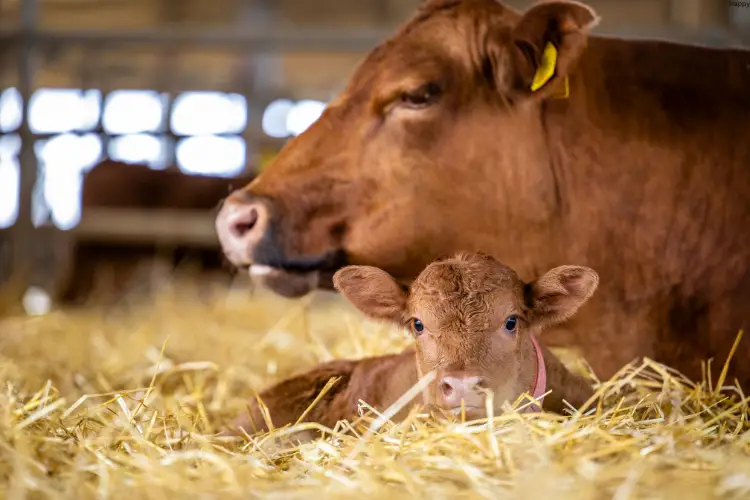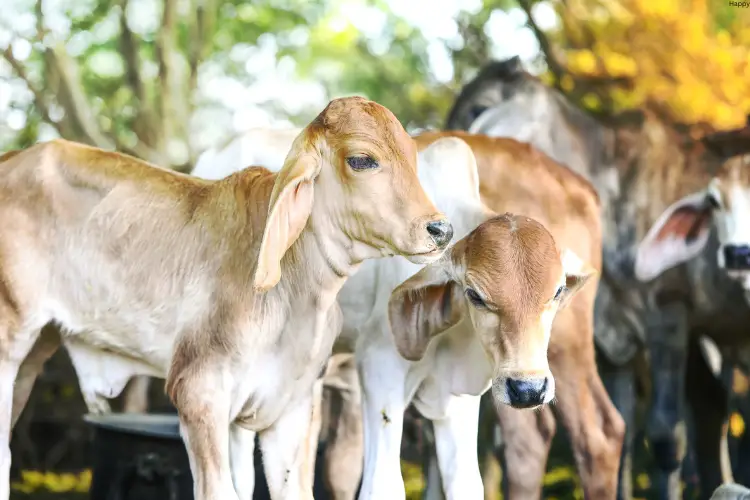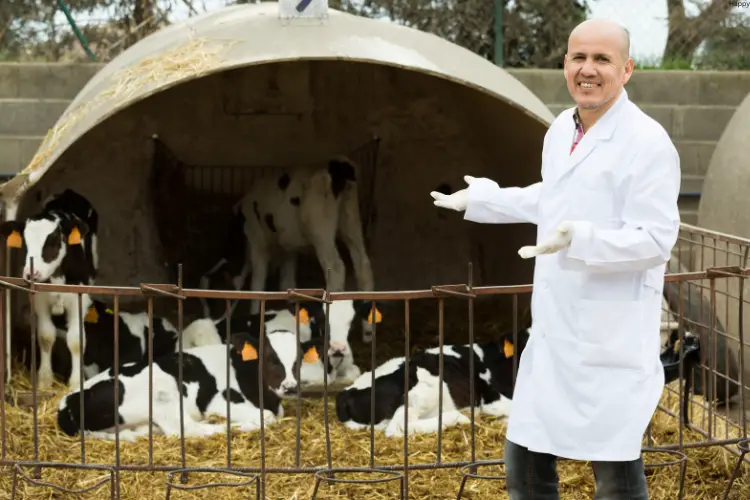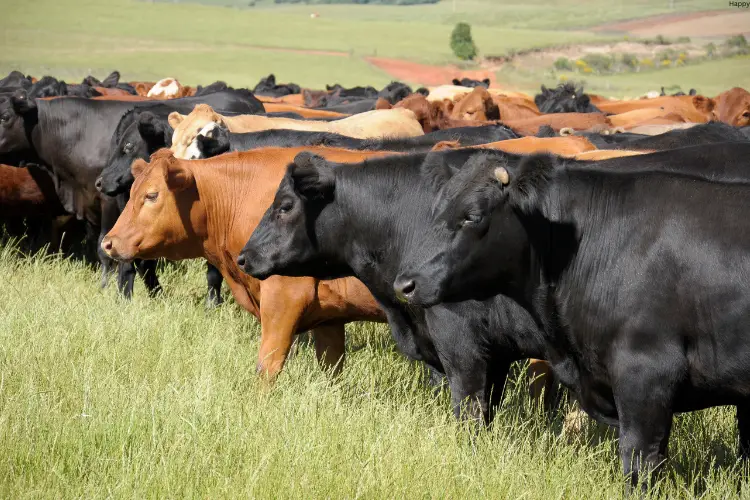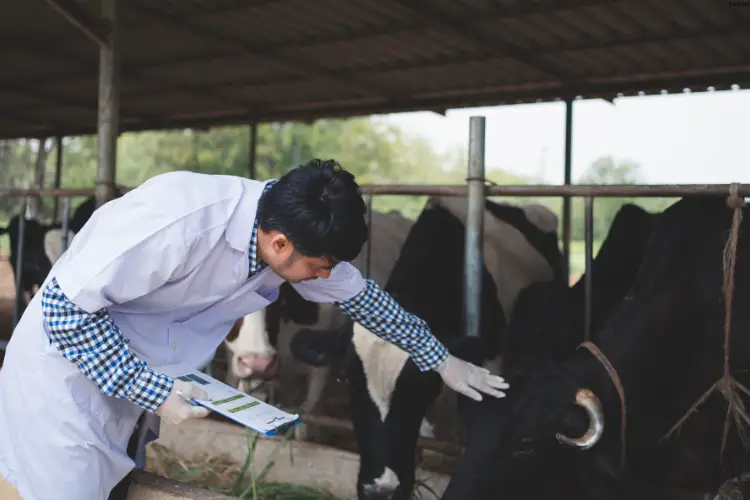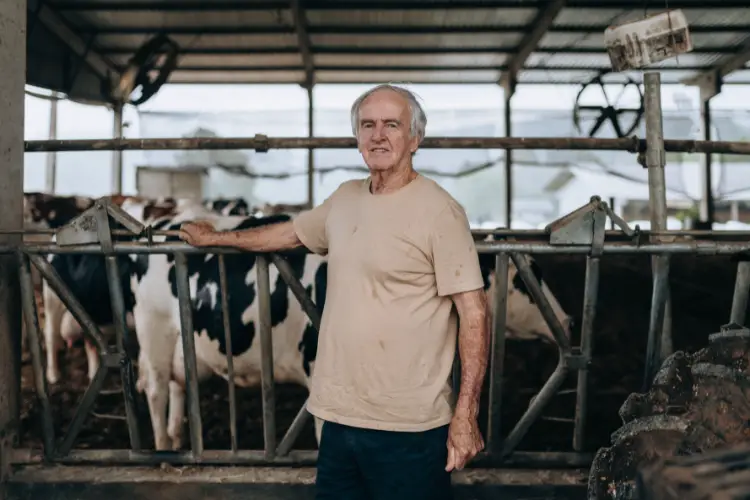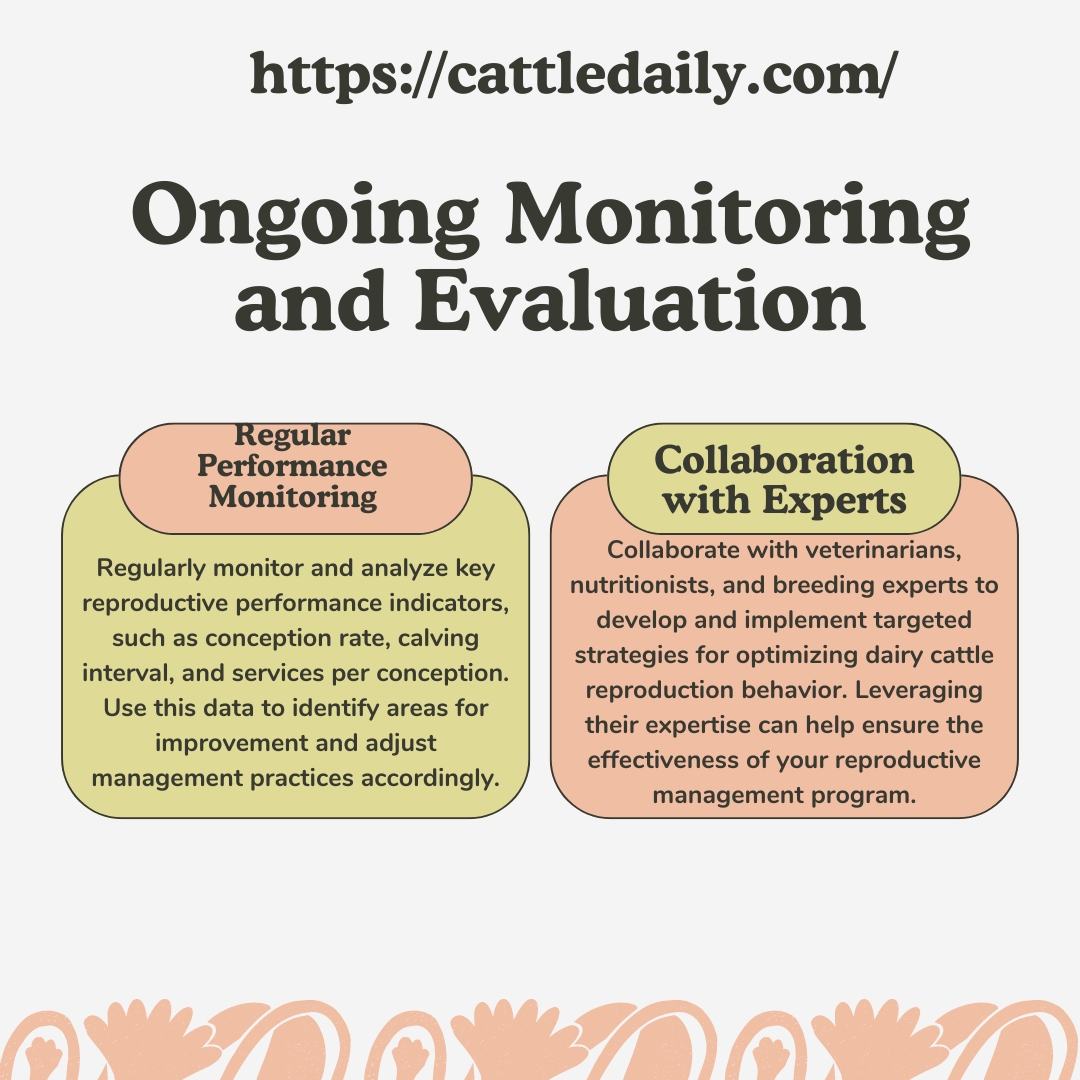Dairy cattle reproduction is a critical component of successful dairy farming operations. The reproductive efficiency of a dairy herd can have a significant impact on the overall productivity and profitability of the farm.
Understanding the various factors that influence dairy cattle reproduction behavior is essential for dairy farmers and industry professionals to implement effective management strategies and optimize herd performance.
Key Takeaways:
- Dairy cattle reproduction is crucial for maintaining consistent milk production, timely calving intervals, and herd sustainability.
- Factors influencing dairy cattle reproduction behavior include nutrition, body condition, herd health, environmental factors, genetics, and breeding management.
- Strategies for optimizing dairy cattle reproduction behavior include:
- Ensuring proper nutrition and maintaining optimal body condition
- Implementing comprehensive herd health and preventive care programs
- Improving estrous detection and breeding management practices
- Incorporating genetic selection for favorable fertility and reproductive traits
- Continuously monitoring and evaluating reproductive performance data
- A case study demonstrated that a holistic approach to reproductive management, including nutritional optimization, herd health protocols, breeding strategies, and genetic improvement, can lead to significant improvements in conception rates, calving intervals, and overall herd fertility.
- Collaboration with veterinarians, nutritionists, and breeding experts is crucial for developing and implementing targeted strategies to optimize dairy cattle reproduction behavior.
The Importance of Dairy Cattle Reproduction
Dairy cattle reproduction is the foundation for the dairy industry, as it allows for the continuous production of milk and the replenishment of the herd. Optimal reproductive performance ensures:
- Consistent milk production throughout the year
- Timely calving intervals to maintain a steady supply of milk
- Availability of replacement heifers to sustain the herd
Improving dairy cattle reproduction can lead to increased milk yields, reduced culling rates, and enhanced overall herd health and longevity.
Factors Influencing Dairy Cattle Reproduction Behavior
Several key factors can influence the reproduction behavior of dairy cattle, including:
1. Nutrition and Body Condition
- Adequate energy, protein, and nutrient intake are essential for optimal reproductive performance.
- Cows with a body condition score (BCS) within the recommended range (3.0 to 3.5) tend to have better conception rates and shorter calving intervals.
| Nutrition | Body Condition |
|---|---|
| Adequate energy, protein, and nutrient intake are essential for optimal reproductive performance. | Cows with a body condition score (BCS) within the recommended range (3.0 to 3.5) tend to have better conception rates and shorter calving intervals. |
2. Herd Health and Management
- Diseases, such as mastitis, lameness, and reproductive disorders, can negatively impact fertility and reproductive efficiency.
- Proper herd management practices, including timely disease detection, treatment, and vaccination programs, are crucial.
3. Environmental Factors
- Temperature, humidity, and photoperiod (day length) can influence the onset of puberty, estrous cycles, and breeding behavior.
- Stress, caused by factors like overcrowding, poor air quality, or poor handling, can disrupt normal reproductive function.
4. Genetics and Breeding
- Genetic selection for improved fertility and reproductive traits can enhance the overall reproductive performance of the herd.
- The use of proven sires with favorable breeding values for fertility can help improve conception rates and calving intervals.
5. Estrous Detection and Breeding Management
- Accurate and timely detection of estrus (heat) is essential for effective breeding management.
- Optimal breeding strategies, such as synchronization programs and timed artificial insemination (AI), can improve reproductive efficiency.
| Estrous Detection | Breeding Management |
|---|---|
| Accurate and timely detection of estrus (heat) is essential for effective breeding management. | Optimal breeding strategies, such as synchronization programs and timed artificial insemination (AI), can improve reproductive efficiency. |
Strategies for Optimizing Dairy Cattle Reproduction Behavior
To optimize dairy cattle reproduction behavior, dairy farmers and industry professionals can implement the following strategies:
1. Nutrition and Body Condition Management
- Ensure a balanced diet that meets the energy, protein, and nutrient requirements of the herd, especially during the transition period and early lactation.
- Monitor and maintain the recommended body condition score range for each stage of the production cycle.
- Provide adequate access to clean, fresh water to support reproductive function.
2. Herd Health and Preventive Care
- Implement comprehensive herd health programs, including regular veterinary checkups, disease prevention, and treatment protocols.
- Develop and adhere to a vaccination schedule to protect the herd against reproductive diseases.
- Maintain a clean, well-ventilated, and comfortable environment to minimize stress and promote reproductive performance.
| Herd Health | Disease Prevention | Treatment Protocols |
|---|---|---|
| Implement comprehensive herd health programs, including regular veterinary checkups. | Develop and adhere to a vaccination schedule to protect the herd against reproductive diseases. | Maintain a clean, well-ventilated, and comfortable environment to minimize stress and promote reproductive performance. |
3. Breeding Management and Estrous Detection
- Train personnel in accurate and timely detection of estrus, using a combination of visual observation and technological aids (e.g., activity monitors, pedometers).
- Implement breeding strategies, such as synchronization protocols and timed AI, to optimize conception rates and calving intervals.
- Maintain detailed breeding records to analyze and improve reproductive performance over time.
4. Genetic Improvement
- Develop a breeding program that selects for favorable fertility and reproductive traits, such as conception rate, calving ease, and daughter fertility.
- Utilize semen from proven sires with high breeding values for fertility and reproduction to improve herd genetics.
- Consider the use of genomic testing to identify and select for animals with superior genetic potential for reproductive performance.
5. Ongoing Monitoring and Evaluation
- Regularly monitor and analyze key reproductive performance indicators, such as conception rate, calving interval, and services per conception.
- Use this data to identify areas for improvement and adjust management practices accordingly.
- Collaborate with veterinarians, nutritionists, and breeding experts to develop and implement targeted strategies for optimizing dairy cattle reproduction behavior.
Case Study: Implementing Successful Reproductive Management Strategies
A dairy farm in the Midwestern United States recently implemented a comprehensive reproductive management program to address declining fertility and productivity in their herd. The key steps they took include:
- Nutritional Optimization: The farm conducted a thorough review of the herd’s diet and made adjustments to ensure optimal energy, protein, and mineral levels, particularly during the transition period and early lactation.
- Herd Health Protocols: The farm worked closely with their veterinarian to develop and implement a robust herd health program, including regular veterinary check-ups, disease prevention, and treatment strategies.
- Estrous Detection and Breeding Management: The farm invested in activity monitoring technology and provided extensive training for their staff on accurate estrous detection. They also implemented a synchronization program and timed AI to improve breeding efficiency.
- Genetic Improvement: The farm incorporated semen from dairy bulls with high breeding values for fertility and reproductive traits, and they began using genomic testing to identify superior replacement heifers.
- Continuous Monitoring and Evaluation: The farm closely tracked and analyzed their reproductive performance data, making adjustments to their management strategies as needed to address any issues that arose.
As a result of these strategies, the farm saw a significant improvement in their reproductive performance, including:
- Increased conception rates, from an average of 40% to over 55%
- Reduced calving intervals, from an average of 14 months to 13 months
- Improved herd fertility, with a higher percentage of cows breeding back in a timely manner
The farm’s overall milk production and profitability also increased, demonstrating the tangible benefits of optimizing dairy cattle reproduction behavior through a comprehensive, data-driven approach.
Conclusion
Optimizing dairy cattle reproduction behavior is a multifaceted challenge that requires a holistic approach encompassing nutrition, herd health, breeding management, and genetic improvement.
By understanding the key factors that influence reproductive performance and implementing targeted strategies, dairy farmers and industry professionals can enhance the overall productivity and profitability of their dairy operations.
Continuous monitoring, evaluation, and collaboration with experts are essential for maintaining and further improving the reproductive efficiency of the dairy herd.

